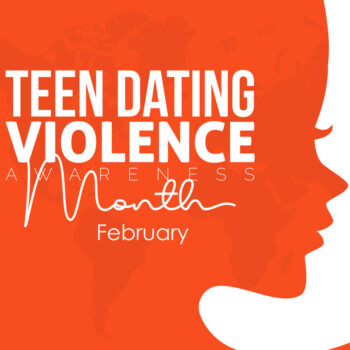By: Tanya Kramer
In the words of Taylor Swift: “You don’t have to forgive, and you don’t have to forget to move on. You can move on without any of those things happening. You just become indifferent and then you move on”. For the record, Taylor goes on to say that forgiveness is important for people who have enriched your life.
You can find the full interview from 4 years ago on CBS’s Sunday Morning program here. See minute 8:10 about forgiveness at this link: https://www.youtube.com/watch?v=x-nv6HWXvVM
As the new year has come and gone, it is helpful to think about how to move forward past difficult things from the last year or in the past. One might ask, how do I “move on” as Taylor Swift suggests? Well, the first thing to explore is assessing what we have (or had) control over versus what we don’t have control over.
When the Situation is (or was) in Your Control
If the situation that is happening is something you have some control over, then there are some ways to help increase the chances of healthy closure by how you handle it. If it is something from your past, there are options to go back and repair or heal through specific actions.
What are some examples of situations where we have (or had) control and we desire to explore options for healthy closure?
• Knowing we need to end a romantic, friend, or family relationship (or did in the past)
• Knowing we or someone we care about is moving away (or moved away in the past)
• Knowing we or someone we know are dying from an illness
• Knowing it is time to change a job (or left a job in the past)
• Knowing there is transition in our life or someone else that will impact us (present or past)
• There are other examples….but if there is space for you to control something, then this category fits what do we do?
There are lots of ways to navigate these types of situations, and here are just a few ideas to consider to help increase the chances of healthy closure when you have some level of control.
Communication – If you know something is happening, think about how you want to communicate with the person how you feel about the situation. You might want to consider sharing feelings, worries, hopes, and fears with the person. It also might be very important to hear how the other person is feeling and thinking. Communication helps people feel connected, even if the communication is about something ending.
Repairing – If something has happened in the past and you realize now that you wish you had approached the situation differently, then you can go back and communicate what you learned to the people impacted. This is often called “repairing” or if the harm was significant it can sometimes be called “restorative justice”.
Celebrating or Honoring the relationship or experience – Depending on the situation, it might be appropriate to celebrate or honor what has been true, even if there is a change happening. This can be through honoring a relationship, honoring the work, or celebrating the experiences that have been shared.
Grief and Loss – Embracing the normal grief and loss process of any difficult situation, which may include feelings of denial, anger, bargaining, depression / sadness, and acceptance.
Share – Talking to a close friend, family member, or therapist can be a helpful outlet to process emotions and thoughts about a change that is happening.
Boundaries – You might realize there are some specific boundaries you need to set in order to take care of yourself due to this change. You should take some time to identify what these boundaries are, and then communicate them to the people / person who needs to know these boundaries.
Lessons Learned – Something ending can be very difficult and even painful. But one way to move toward acceptance is to think about what you learned from this experience.
Think about what you might do differently or what boundaries you would have set sooner. A difficult experience is only a waste of time if we don’t learn something from it (of course, only if this applies to your situation).
Make Amends – In some situations, we might realize that we caused harm. In these situations, it may be important to make amends if that does not cause further harm to anyone else.
Self Forgiveness – Sometimes we later regret how we handled a situation. When this happens, you can use many of the suggestions on this list, but at the end of the day forgiving yourself will be important. A resource to work through self forgiveness can be found in the book “Forgiving Yourself” by Beverly Flanigan, M.S.S.W.
Lack of Control: When things happen that we don’t have control over, there are ways to lean into healthy closure. Closure does not mean control. Closure means honoring the experience or transition with intention and then moving forward in life, sometimes this means “letting go”.
What are some examples of situations that “happen to us” where we might need to explore options for healthy closure?
• Death of a person or pet
• Someone close moving away
• Illness
• Relationship (romantic, friend, or family) ending, even if you don’t want it to
• Jobs ending
• Responding to an unplanned situation
• Important plans getting changed
• Trauma (there are many things that fall under this category)
• There are so many other examples – but if you did not have control…then this fits what do we do?
The answer to this can vary depending on the situation, but her are a few suggestions to consider…and only you trying them will determine which exercise will have the best impact for you.
• Write a letter to yourself, to the person, to the illness, the pet, etc – When writing a letter, you can choose to send it (if this is an option), hold onto it like a journal where you processed your feelings, or through a ritual let it go (Examples are burning it, shredding it, tearing it up, painting over it, etc.). This is helpful because it give a space for you to express the emotions and thoughts that you might be holding inside. This exercise helps the emotion move out of your body which aids in emotional healing.
• Create a ritual – If the thing you can’t control is the loss of someone or a pet, then find a way to honor them. You could create a shrine with pictures and memories. You could decide to celebrate them on an important date such as their birthday, or do something they loved regularly in your life like listen to their favorite music or hike in a favorite spot of theirs.
• Journaling – Journaling about your experience is a private way to help clear out your thoughts and feelings about what happened. Over time you will find that you might have less to journal about as you heal from the loss that happened to you. If you enjoy art, then you could do the same process only through art journaling using pictures.
• Give yourself permission to feel and experience the Grief and Loss Cycle which often includes tears or intense emotions – This cycle includes in no specific order: denial, anger, bargaining, anger / sadness, and acceptance. Everybody grieves differently on their own timeline. Give yourself permission to grieve on your terms.
• Understanding Anger – Understanding that anger is a secondary emotion, meaning under the anger there are often more intimate feelings such as sadness, hurt, loneliness, etc. Understanding anger more as a protective emotion, and then finding a trusted person to process your more intimate feelings. A famous quote by Buddha is “Holding onto anger is like grasping a hot coal with the intent of throwing it at someone else; you are the one who gets burned.”
• Acceptance – Understand that you might not get answers to all your questions. Sometimes the phrase “Radical Acceptance” can be helpful. We can lean into knowing we don’t know why, and we can just radically accept it as truth. If you want to explore this further, you can look into the book called “Radical Acceptance: Embracing Your Life with the Heart of a Buddha” by Tara Brach.
• Consider a Larger Picture – Sometimes what we “want” is not what we “need”. Thinking about the bigger picture sometimes helps us see that what we had could be improved upon when given the space to do so.
• Therapy / Someone you Trust – You do not need to walk this path of grief alone. Ask for support from someone you trust or a therapist / counselor. When we can share our thoughts and feelings with someone we trust who can have empathy for our experience, it can significantly change how we are holding our hurt and pain.
• Healthy Distraction – We don’t want to distract all the time and completely avoid our emotions. But it is OK to find a healthy distraction to fill the void of the change, loss, or transition. Some people find a new interest or hobby. Some people put more energy into things they already enjoy in their life. But it is OK to take breaks from feeling the big emotions because it gives your whole system a break.’
• Solitude – Sometimes doing things on your own can be a reminder that you can survive difficult changes in your life.
• Get Perspective – Sometimes the reason we feel so impacted by something in the present is because it reminds us of prior experiences in life from our past. These experiences can be linked in the brain, so when they happen, they can have a lot more energy which can be hard to let go of. If this is happening for you, then you might want to consider working with a counselor to help you navigate these complex experiences.
• Focus on your Strengths – Sometimes in the midst of loss, we forget who we are. Reflect on your strengths and the character traits you have that you are proud of. This is a reminder that you are not lost in the midst of a great loss.
• Find Moments of Joy / Happiness – Do things that in the past have brought you joy or happiness. Be sure to hold no judgment as you play with puppies, ride a roller coaster, explore a new restaurant, etc.
• Plan for your Future – Decide on one thing you will do that is intentionally you focusing on your future. This could be taking a class, planning a trip, completing a task, visiting a dear friend that you have not seen, etc.
Recognize that at the end of the day, Closure Comes from You, Not Anyone Else
You are the best source of knowing what you need in any situation. So be sure to slow down and ask yourself this question. You might need to talk to someone, get better sleep, exercise, do something new, or focus on something that has nothing to do with the change. Be kind to yourself as it is a process to healing might “ebb and flow” depending on triggers or reminders.
But also know you are not alone in this experience, so reach out to your support system as needed. True closure is about facing negative emotions and finding a way to honor them, and then move past them. As Taylor Swift said “You just become indifferent, and then you just move on”.












